Axagon CLR-M2XT in detail
One of the most revered SSD coolers ever. With the CLR-M2XT, Axagon opted for a transverse fin layout, which makes this cooler different from all the others (within Axagon). The fins are naturally shorter and there is less surface area per one, but again there are more of them and to achieve the highest cooling performance the designers tried to work well with the height as well. But, again, in a way to maintain as much compatibility as possible.
Axagon CLR-M2XT in detail
The cooler is designed for 80-millimeter SSDs in the M.2 format and its dimensions correspond accordingly. At 77mm in length and 22mm in width, it is in contact with all the critical components that need to be cooled on an SSD. For optimal heat transfer (from the SSD to the heatsink), thermal pads are also included.
And then, as with all of Axagon’s relatively more expensive SSD coolers, a backplate is also included. Among other things, it also reinforces the SSD, so that the mounting system of the motherboard does not cause deformation of its PCB and potentially worse contact. The backplate takes care of that as well and contributes to the cooling itself. On the one hand, it is in contact with the SSD via a thermal pad and thus dissipates heat, and on the other hand, it has molded holes on the surface that increase the emissive area. We already praised this detail last time and it seems that Axagon has adopted it and it will be an unwritten standard. That is, at least for higher end SSD cooler models.
The heatsink of the CLR-M2XT weighs 39 grams and is made up of an aluminum monolith with relatively tightly sliced fins. The distance between them is approximately 1.25–1.40 mm, with the fins being 0.45–0.75 mm thick (they thin out towards the tip). Axagon tried to do as much as possible with the dimensions given, but also kept in mind a certain sturdiness. Even with such thicknesses, the heatsink comb is sufficiently strong and the individual fins will not be bent by mistake.
The height of the fins is approximately 15.3 mm, while the heatsink itself is 19.3 mm in height (the base, the substrate, is 4 mm thick). The total height with both the SSD and the backplate is then around 24 mm. That’s a third less than the higher-end CLR-M2XL, and the competing Thermalright HR-10 2280 is up to about 18mm taller. This should allow the CLR-M2XT to be installed in builds where there is little space between a graphics card and a large CPU cooler and you can’t fit a tall SSD cooler. Of course, the CLR-M2XT cooler is also taller, and don’t count on mounting it in an M.2 slot that the graphics card covers from above. But it should always fit above the graphics card, even next to a wide cooler on the CPU.
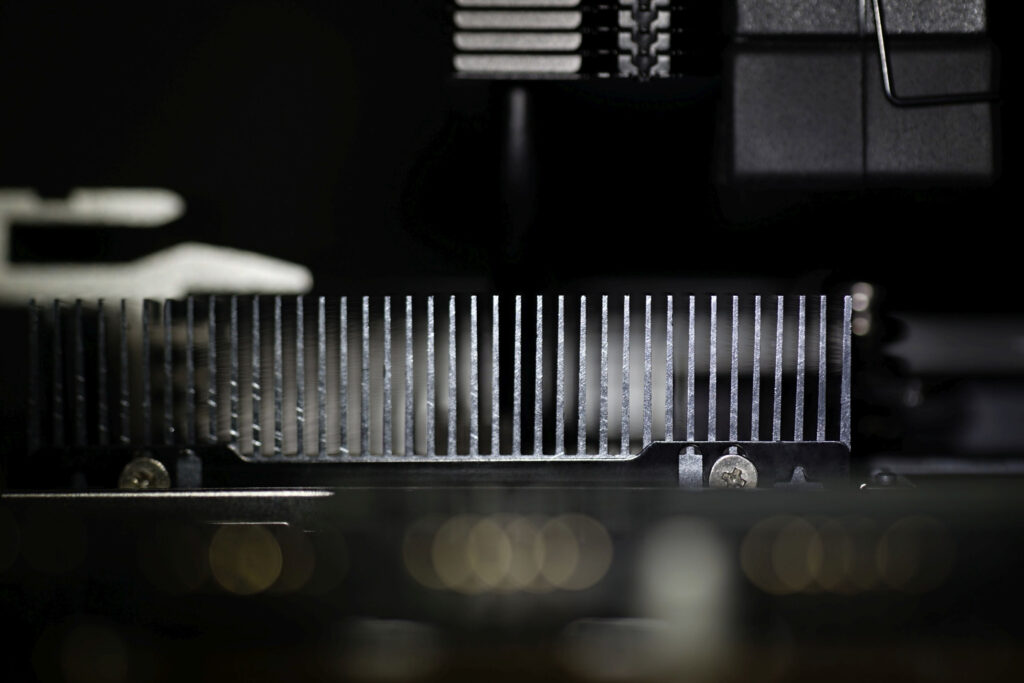
The CLR-M2XT cooler supports both single-sided and double-sided SSDs, but different thermal pad applications are recommended for each of the two types. The cooler comes with pads of varying thicknesses, and on a single-sided SSD the thinner one should come on top, with the controller and with all the memory. Specifically, with the white side that adheres well to the SSD and with the subtly patterned red side to the cooler’s heatsink. The thicker, blue one (don’t forget to remove the protective film from it before mounting) then goes on the bottom. For double-sided SSDs, according to the instructions, the order of installing the pads is reversed. That is, with the thicker one on top. There is one spare pad (thicker, blue) in the package.
During the installation, we found the approach where we install the pads on the SSD first and only then we proceed to the heatsink. This way you can fit the pads well over the entire surface of the critical components and it won’t happen that there is a lack of contact somewhere.
The new thing about the Axagon backplate compared to older designs is the backstop, or wings in the back, so you don’t have to wonder if the backplate structure will interfere with the spacer screw or if the SSD connector on the other side is protruding enough to be installed in the M.2 slot. A practical detail.
The backplate is screwed to the finned heatsink at four points. Two (on both sides) in the front and two in the back. The mounting is reliable and stable.
We already have a number of competing third-party SSDs in the results database, but when it comes to models with transverse finning (such as the Axagon CLR-M2XT), the Akasa Gecko Pro or Thermalright HR-10 2280 models are worth paying attention to. Each of these coolers is conceived slightly differently, for a different optimum application, but they share the transverse finning. This fin orientation may eventually scale better in cases with upward airflow from the bottom or in builds without fans.
Methodology
The tests take place in a wind tunnel that substitutes for a standard computer case. Four Noctua NF-S12A PWM@550 rpm fans are used for system cooling in a balanced ratio of two intake to two exhaust fans. The intake air temperature is strictly controlled and is kept within a narrow range of 21–21.3 °C for maximum possible accuracy.
In line with findings from measurements of the impact of different positions on cooling efficiency, we test standalone SSD coolers in the first slot, above the graphics card. From board tests we naturally have a lot of results of coolers (referred to as cooler 1 and cooler 2) from other positions as well, but in those cases, it is due to their fixed position.
For testing, we use a Samsung 980 Pro SSD (1 TB). The load is run for 10 minutes (which is enough time in the wind tunnel for temperatures to stabilize) in CrystalDiskMark – sequential read and write cycles. The achieved power draw then is about 6 W, which is the upper limit of what M.2 SSDs can do, and not even models with PCIe 5.0 interface support are supposed to change this.





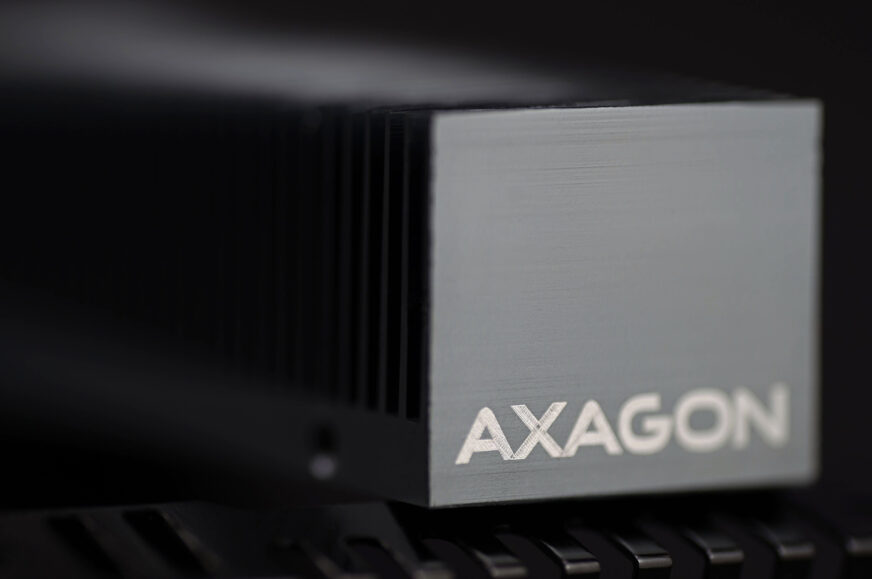
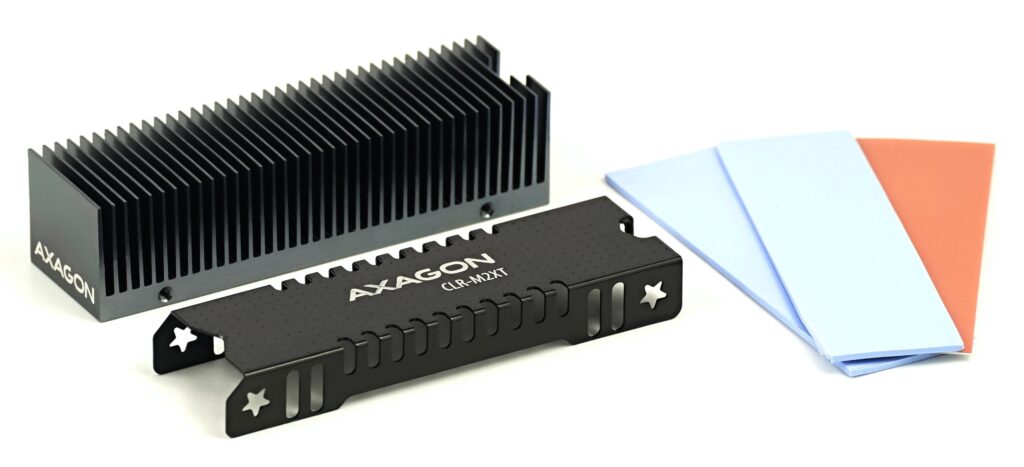
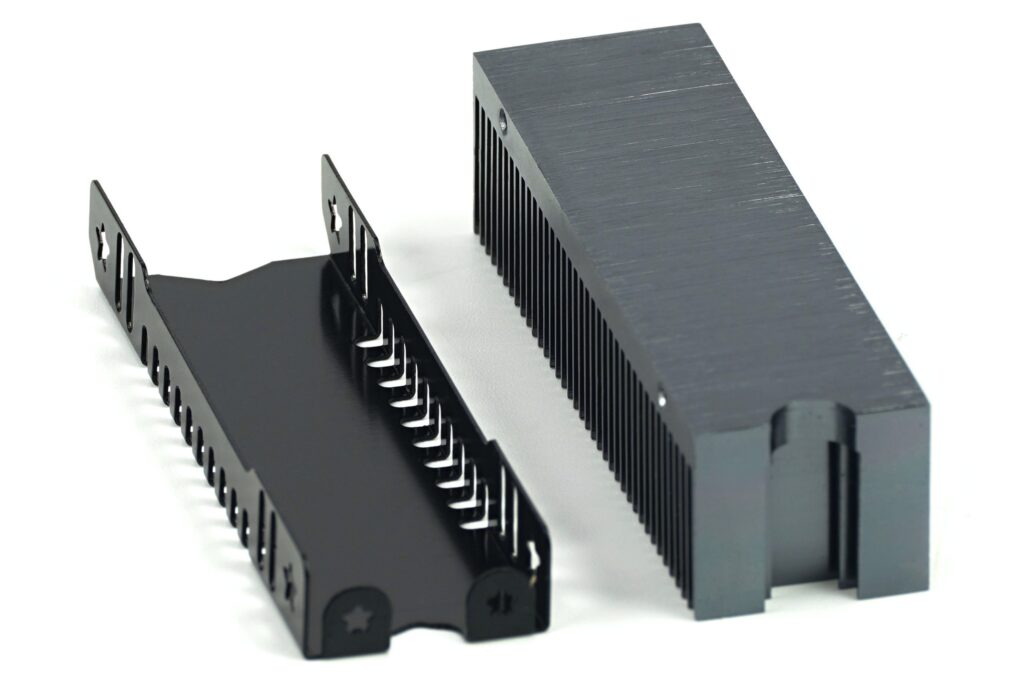
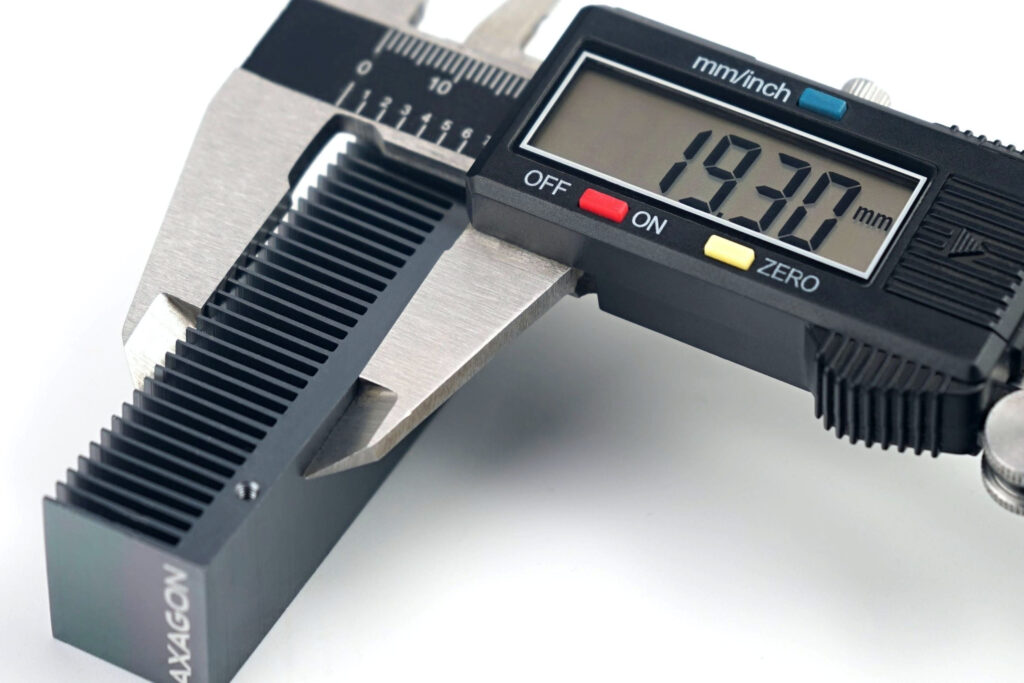
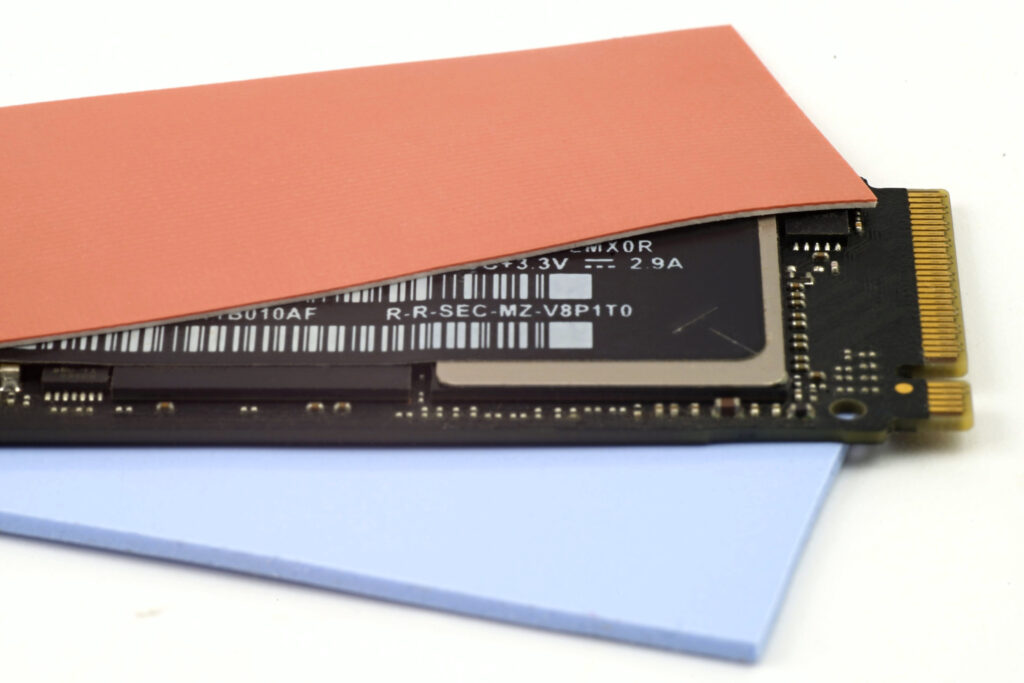

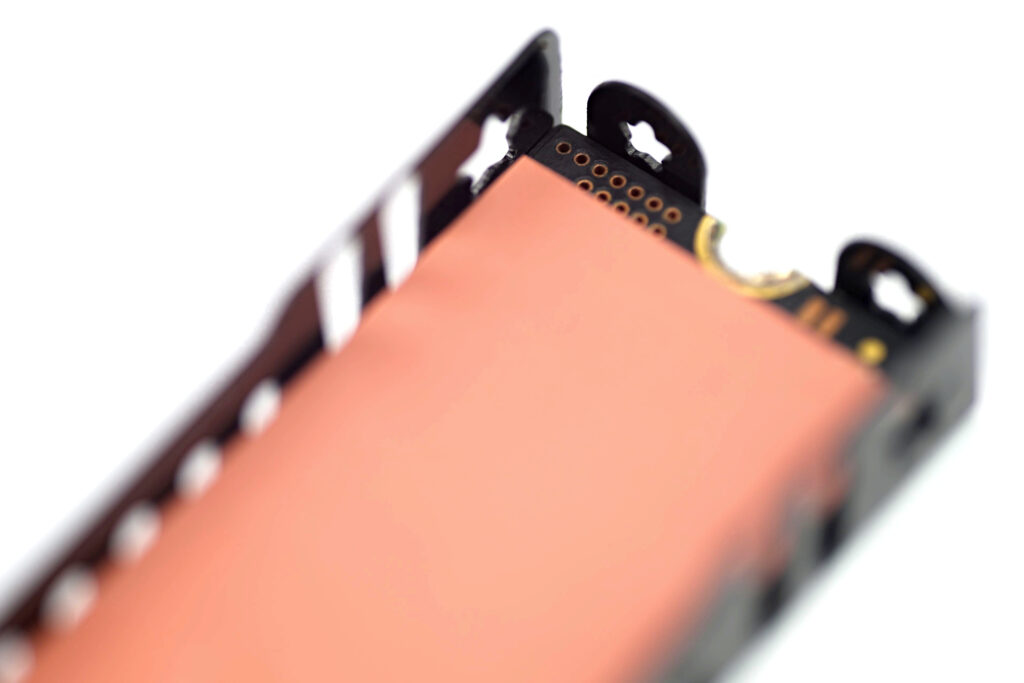
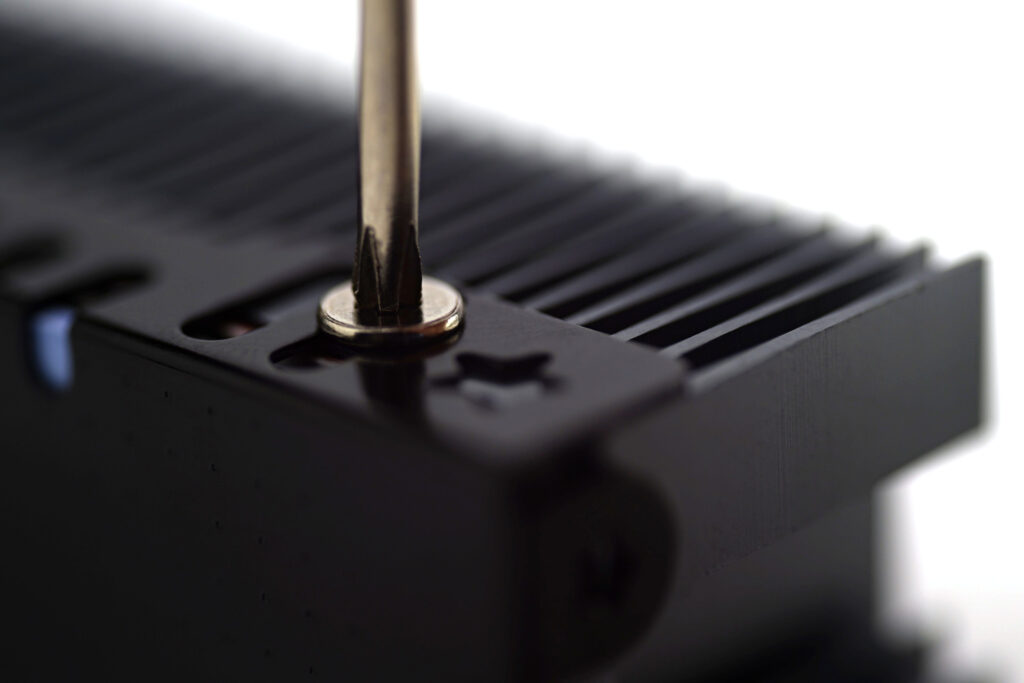
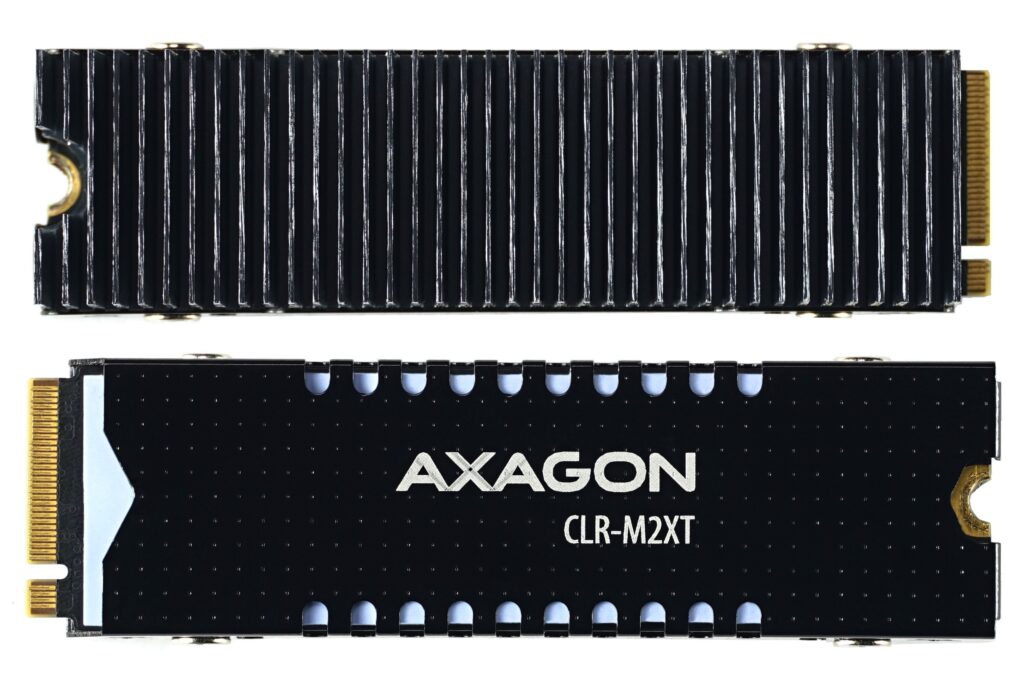
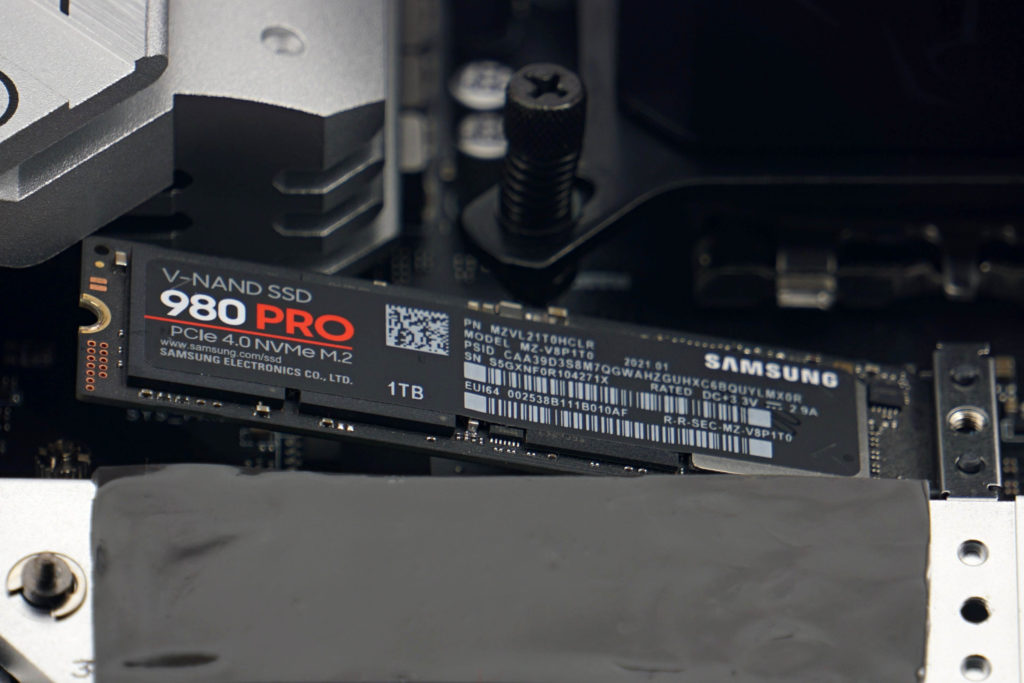



I am using what appears to be the same cooler but with a different name (Jeyi Godfins) in my build, the decision based on tests by BuildOrBuy on YouTube: https://www.youtube.com/watch?v=v5Mc3SGW3e4
In his tests, the results appear to heavily vary between the two orientations he tested. Lying flat, it’s 52C, while rotated by 90 degrees it results in 44C (for reference, the Jeyi iGlacier8, which seems identical to the Axagon M2XL, is 48C no matter what orientation it is in).
Note that the Axagon and Jeyi variants come with different thermal pads. Mine comes with little square pads with different thicknesses, which I careful choose and tested ones that can even out the surface (for example, the DRAM chip is lower so I used slightly thicker pads). The holes on the base allow me to shine a light through and verify that contact is perfect between the heatsink, the pads and the SSD. It’s curious that Axagon chose long pads instead (which I assume are the same as the ones on the M2XL).
This surprises me, since in both cases there is a vertical orientation of the fins. With such a reorientation of the heatsink, where in one case the fins are horizontal and in the other vertical, under certain circumstances, for example in system cooling without fans, the heat will be dissipated from the heatsink faster in the second case (vertical orientation of the fins) compared to when the fins are horizontal to gravity and more heat accumulates under each one.
Assessing the efficiency of passive coolers is extremely complex. When combining different positions with different airflow intensities, we would probably find that the variance in cooling performance can be quite wide. And in different situations there will be different orders of magnitude. The components that are around the cooler then also have an effect on the cooling. The (non-)presence of an expansion card can affect the airflow around the cooler quite significantly. Taking all of this into account, it will certainly drive you crazy and probably unnecessarily so, because very few people will be interested in such analyses. 🙂
In my fully passive system (Noctua NH-P1 w/ i5-11400, Palit GTX 1650 Kalm X, Seasonic Prime Fanless PX450), I have replaced the Axagon CLR-M2XL coolers on my 2 TB Kingston KC2500 and KC3000 drives with these M2XT coolers and both drives no longer hit 70dC under 15 min continuous load at 28dC ambient in a full system stress test scenario. Not a big surprise though, vertical orientation of fins is always better for natural convection.
Yes, for passive builds (i.e. without system fans), a vertical orientation of the fins is beneficial for achieving the highest possible cooling performance.